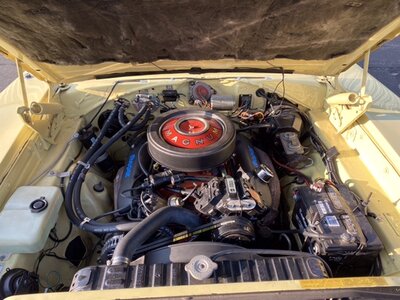Armycopter
Active Member
I recently acquired my Charger. It has factory AC but it’s not hooked up or working. I am totally unfamiliar with AC systems so I was hoping I could get some assistance putting together a game plan to get the system working.
Here is what I know
1. There is a compressor currently installed in the car. Nothing is hooked to it and I have no idea how old it is or whether its been rebuilt.
2. The condenser is not in the car but I have it. Seems to be in decent shape.
3. The previous owner rebuilt the heater box and installed new evaporator and heater core.
4. The receiver/drier or whatever it is called is installed in the car with a steel tube running to the location of where the condenser should be installed.
5. I do have some hoses that came with the car and look to be part of the AC system.
I will upload a pic but not sure how much you can see.
Thanks for any advice.
Mark

Here is what I know
1. There is a compressor currently installed in the car. Nothing is hooked to it and I have no idea how old it is or whether its been rebuilt.
2. The condenser is not in the car but I have it. Seems to be in decent shape.
3. The previous owner rebuilt the heater box and installed new evaporator and heater core.
4. The receiver/drier or whatever it is called is installed in the car with a steel tube running to the location of where the condenser should be installed.
5. I do have some hoses that came with the car and look to be part of the AC system.
I will upload a pic but not sure how much you can see.
Thanks for any advice.
Mark

















